|
Motorcycle News - 2020 MV Agusta Brutale 1000 RR
https://ift.tt/38h4Th5 If you were expecting a warmed-over Brutale 1000 RR for 2020, you expected wrong. If the first Brutale of 1997 was a bit, ahhh, brutal, then you’ll be reassured to learn the latest bike is all about rideability. Confidence-inspiring performance was one of the main priorities. To that end, the new bike embraces all the latest state-of-art electronics (yes, cruise control), which is a good thing since MV says its new hyper-naked is the most powerful of its type in the world: 208 prancing horsepower at 13,450 rpm, and 86.5 foot-pounds torque (116.5 Nm) at 11,000. That’s in a 411-pound package (before you add fluids and 4.23 gallons of high-test). If you’ve ever been close to an MV, you won’t be surprised to know that this new Serie Oro-derived package itself is impeccably and aerodynamically wrapped, including wings that are said to provide downforce once motoring above 120 mph. MV’s Research & Development Manager Brian Gillen goes to great length to express how MV’s entire philosophy has changed with this bike, which work began on four years ago – before any other 200-hp naked bikes existed. It reflects a new mentality, he says, of not only achieving absolute power, but also of making the motorcycle much more approachable. Ergonomics, electronics, engine power and suspension are all designed to make the rider feel comfortable and in control, whether it’s Misano or the Stelvio Pass or downtown Milan. “If we were looking to just make the fastest bike around Misano, it would be very easy to work on just that single focus. Opening up our horizons, making sure we’re including the entire audience of customers, it’s a much more complicated task. We’re looking at all sizes of riders, making sure we can all fit on the bike. And when we’re riding the bike, the connection from the rider to the rear tire, not from the twist grip to the engine, or to the throttle bodies, but directly to the rear wheel – there’s no delay and there’s no harshness,” says Gillen. “We spent a lot of time [170,000 hours!] bringing a product that’s much more mature, much more dynamic and much more open to a broader audience in all situations.” Where do we sign up to borrow one? —————————————————————————————————– MV Agusta Press Release: MV AGUSTA BRUTALE 1000 RRBased on the extraordinary Serie Oro, limited production has recently begun, the Brutale 1000 RR will bring the same nuances, and carefully balanced choices of style, technical components and dynamic development onto the road. Confidence inspiring performance was one of the main priorities in designing the new Brutale 1000. Continual increases in maximum power of the more sports-oriented models has not been matched by a relative increase in ease of use on the road. This means that motorcycle designers have a responsibility to offer the customer the best possible conditions of: technology, style and ease of control. The goal is to get the best out of chassis, engine and electronics, with minimum effort from the rider, taking into account the exceptional performance levels of models such as the Brutale 1000 RR. A spectacular Superbike replica. Naked. And available to all. Design and details The design draws on tight lines and forms which are perfectly integrated between the front and rear end: this balance has long been a distinctive trait of the four-cylinder Brutale, right from the first iconic model that marked the relaunch of the Italian brand along with the F4. The stand-out features, including headlight, fuel tank and tail fairing, have been designed and manufactured specifically for this new Brutale. The full-LED headlight uses Cornering Lights for improved illumination, managed from the inertial platform: the light beam, in fact, changes direction and angle based on the dynamic position of the bike. The headlight, that boasts an internal coloured X-shaped section, another exclusive feature, is enhanced by the Daylight Running Lights, designed to provide a lighting effect that makes the new Brutale unmistakable from any angle. The emotional experience offered by the Brutale 1000 RR is the same as the Serie Oro: this is thanks to outfitting choices that make the two models virtually identical. The superstructures on the 1000 RR, for example, also use precisely modelled carbon-fibre elements, ideal to outline and enhance the frame and engine; although the exclusive “red wire” is reserved for the Serie Oro. The latter features a full kit of additional components: some of these can be purchased for the 1000 RR, such as GPS tracking, available as an original accessory. Another difference is seen in the bolts and screws, made of steel instead of titanium. The Serie Oro’s light carbon-fibre wheel rims have been replaced on the 1000 RR with forged aluminium components, featuring a special design and weight specifications that contribute to the optimal overall 186 kg dry weight. The second generation 5-inch TFT display colour panel, with 800×480 pixel resolution, is the main interface between rider and the many customisable settings on the Brutale 1000 RR. Access to the numerous configuration menus is immediate via intuitive electric handlebar controls, that allow you to access the various sections without delay. Instrumentation allows Bluetooth connection with your smartphone to manage incoming calls, messages and music. Cruise control is also included, very handy also on a hyper naked motorcycle like the 1000 RR. The dashboard allows optimal use of the many functions offered by the MV Ride navigation app, that opens a world of possibilities. For example, bike electronics can be customised directly via smartphone, as well as creating and saving routes, which can then be shared with friends. Extremely useful navigation functions can also be immediately accessed via mirroring on the dashboard with the MV Ride App. Engine and electronics Like the Brutale 1000 Serie Oro, the 1000 RR engine represents the most recent evolution of the in-line, four-cylinder MV Agusta design. This new version stands out for its significant redesign, across all areas; the use of the finest materials; and complete review of electronic-management parameters which are greatly refined compared to previous versions. All of this makes this hyper naked bike the most powerful of its type in the world. In fact, the power and torque values set new records: 208 hp at 13,450 rpm and 116.5 Nm. The radial valve timing and central timing chain, technical choices that have characterised all of the most recent MV Agusta four-cylinder engines, are used here following significant redesign, inspired by Formula 1 and MotoGP technology. Specifically, the radial valves in the combustion chamber uses F1 technology, whilst the titanium piston rods, typical in MotoGP vehicles, contribute to reducing mass, loads and inertia of the engine. The central timing chain is also a MotoGP-inspired component, and is capable of mitigating the torsion effects of camshafts at high rpm. 
Center-driven cams are MotoGp tech that means two very short camshafts with reduced torsional reaction, and very precise valve control at high rpm, says Brian Gillen. Moving the generator behind the cylinders reduces polar moment of inertia via better mass centralization. Oil splitter pan reduces internal friction. In addition, there are new valve guides and camshafts, with unprecedented new timing on both the intake and the exhaust side. The pistons use low-friction Asso piston rings, and there is a new crankshaft that is balanced to limit vibrations at low revs. Based on MV Agusta’s direct experience in factory-derivative competition, it has created the new splitter lubrication system, which allows oil to be separated from moving mechanical parts. The semi-dry sump lubrication is capable of guaranteeing mechanical protection under extreme riding conditions such as during high lean angles and wheelies, yet without compromises in terms of reducing friction levels, that remain significantly low. A large portion of the design and development work has been focused on reducing friction levels, also in terms of the transmission, revamped with gears that reduce both friction and overall noise. This goal is supported by tone wheel and clutch covers that partially absorb noise. Redesign of the airbox has been implemented by a complete redesign of the intake system: the ducts have different lengths to maximise engine efficiency, power and torque. The current structure features dual injectors per cylinder: four lower Mikuni and four upper Magneti Marelli shower head injectors, with greater capacity and positioned above the intake duct. The Arrow exhaust system uses the 4-1-4 set-up, with a throttle valve for maximum torque at lower RPM’s. Electronic engine management has also evolved, thanks to collaboration with Eldor, which has created the new EM2.0 control unit specifically for this four-cylinder platform. The bike also features a full ride by wire multimap system (Sport, Race, Rain and Custom) with IMU inertial platform, which manages traction control with slip strategies (with eight different settings and the option to deactivate it) and modulates intervention based on lean-angle data provided by the IMU. The Front Lift Control, an evolution of the anti-wheelie system, has active and non-active options. Launch control is provided for starting, which acts on the engine revs and torque based on velocity during departure; the electronic EAS 2.1 Up&Down gearbox offers both comfort and ease of use. Chassis, suspension and brakes In true MV Agusta tradition, the frame on the new Brutale offers a highly evolved “mixed structure” with steel lattice and aluminium side plates, aligning it with engine performance and the requirements of increasingly sporty riding style that is also immediate and easy. The riding position is the product of careful ergonomic analysis, aimed to guarantee optimal vehicle control and comfort: the semi-clip on handlebars reveal the bike’s sporty calling. Careful attention to aerodynamics, fundamental for a bike that can reach a maximum speed of over 300 km/h, is clear from the aerodynamic wings positioned beside the radiators, to improve downforce and adding load to the front end, limiting lift at high speed. The effect can be clearly felt over 200 km/h and guarantees the steering precision typical of MV Agusta bikes. The chassis dimensions are identical to those of the Serie Oro: compact wheelbase of 1,415 mm, with front wheel trail of 97 mm. The Öhlins Nix EC fork, with TIN surface treatment features electronic adjustment of the hydraulic brake in application and release. Adjustment of the spring preload is manual. The same electronic management is offered by the Öhlins TTX rear shock absorber fixed to the aluminium single-sided swing arm and the Öhlins EC electronic steering damper, that continually adjusts on the basis of the bike’s speed and is fixed by supports specially designed for the new Brutale. The braking system is the same as the Serie Oro, with the prestigious Brembo Stylema front calipers, radial calipers and 320 mm diameter floating discs. The rear disc is 220 mm and is combined with a dual-piston calliper. Electronic management is assigned to the ABS Bosch 9 Plus system with Race Mode, particularly light and effective.      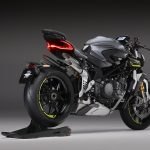  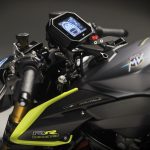 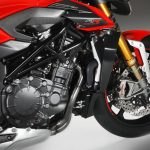      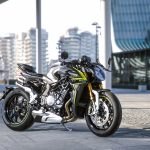    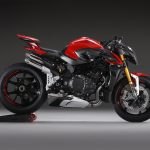 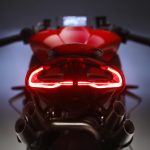 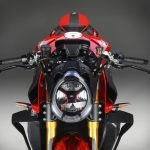 
The post 2020 MV Agusta Brutale 1000 RR appeared first on Motorcycle.com. Motorcycles via Motorcycle.com https://ift.tt/2Std7JO June 30, 2020 at 07:37PM
Motorcycle News - Lessons From a MOron: Essential Throttle Control Techniques
https://ift.tt/3ijHaRZ If there’s one skill on a motorcycle that we take for granted, throttle control might very well be it. If you know how to ride a motorcycle, then you know you need to twist your right wrist. It’s such a fundamental part of what we do, we don’t even think about it. We joke about it all the time, too, using hand motions to “pin it” and go “WFO.” But as any coach of any sport will tell you, mastering the fundamentals is key, and knowing how to use the throttle effectively will go a long way in your motorcycling journey. You’re probably reading this knowing intrinsically that managing the throttle is important, but you might be left wondering why we’ve dedicated a whole page to it. Well, if you’re one of the lucky ones with a motorcycle blessed with perfect fueling, this might be less of an issue for you. Managing the power requested from your hand to the back tire is easy. Unfortunately, many motorcycles aren’t blessed with perfect fueling, especially more recent ones with strange fuel mapping strategies to help meet sound or emission regulations rather than helping you achieve a smooth ride. Or, in other cases, some bikes have multiple power modes with standard settings that are too aggressive in one but not aggressive enough in the other. Here, we’ll share a couple tips and tricks you can try to better manage the throttle. Doing what we do here at MO, motorcycles pass through our grubby paws all the time, so getting a feel for how to best manage their power is important. Sometimes these techniques make a big difference, especially on motorcycles with peaky power bands or twitchy throttles. Other times, there’s no getting around the fact that some motorcycles need aftermarket fuel mapping adjustments to make them run smoother. Here’s hoping these tips work for you. So, let’s begin. Proper Wrist PlacementLet’s start at the very beginning. How should you even hold the throttle? We like to hold it so our wrists are aligned and on the same plane with the imaginary centerline of the grip. Hold it higher and bumps in the road can cause unintentional wrist movement, which then jolts power through the throttle and then the back tire. If you hold it too low, then you’ll have a hard time twisting the grip at all. Keeping your wrist along the centerline lets you twist the grip, first of all, but it also keeps minor bumps and jolts from accidentally blipping the throttle when you didn’t want to. Third, it puts your fingers in the right position to reach for the brake lever, but that’s another discussion entirely… 
See how the rider’s wrist is parallel, and on the same plane, as the centerline of the bar? That’s what you’re aiming for. With your hands properly placed on the grips, another tip to help avoid accidental blips is to stay relaxed and to keep your elbows bent slightly. This way, if you do hit an unexpected bump, your arms will take up the slack and your wrist can stay steady on the throttle. The One-Finger TechniqueHave you ever ridden a motorcycle where, no matter how careful and precise you are with metering your throttle control, the bike always jumps or surges forward? If your answer is no, then consider yourself lucky. For the rest of us, a throttle that acts like an on/off switch is downright annoying. Sometimes, there’s nothing you can do short of getting the ECU re-mapped to fix a fueling issue, but one way to help mitigate the problem is by using what’s called the one-finger technique. 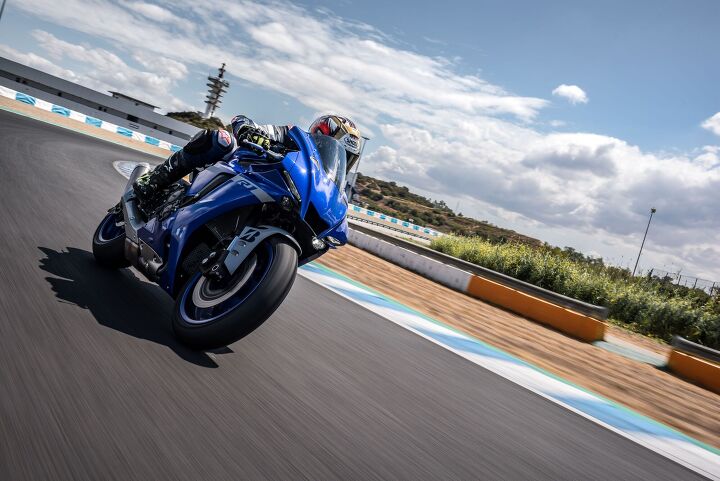
You might need to enlarge the photo to see, but the rider here is employing the one-finger technique as he’s accelerating. It’s really simple. Stay with me. All you do is place your first finger on top of the brake lever. Just rest it there and obviously don’t apply the brakes. When you’re ready to accelerate, especially if it’s just a small amount of acceleration, use your finger to place pressure against the brake lever – almost as if you’re pushing the lever away with your finger – as you twist the throttle. This will help balance the amount of twist you’re giving from your wrist. Think of it like the yin and yang effect – one is balancing out the other. You’ll be surprised how much smoother you can use the throttle with this technique. Don’t believe me? Go sit on your bike right now and try turning the throttle with and without the finger on the brake lever (careful if your bike has carbs – you don’t want to flood them). This technique isn’t super important if you’re traveling in a straight line and just looking to pick up some speed, but if you’re mid-corner and need to use the throttle to correct your line or are coming out of a corner and want to accelerate smoothly, this is a good trick to try. As an added bonus, if you already have a finger resting on the brake lever, you’re then able to reduce your reaction time on the brakes if you do find yourself needing to perform a panic stop or emergency maneuver. 
The one-finger technique is especially useful in slippery conditions and careful throttle application is required. Lesson OverThere you go, two quick and easy pointers for better throttle control on your motorcycle. Remember, some motorcycles simply have jerky power delivery, and while these methods can help reduce the issue, it still doesn’t solve the root cause. If you have the opposite issue – not enough power – then obviously you don’t need to be as careful with your inputs. With proper fueling and engine mapping these techniques will work even better as you’ll be better able to feel those minute throttle openings equating to more power being delivered to the back tire. And that’s a feeling we all love. The post Lessons From a MOron: Essential Throttle Control Techniques appeared first on Motorcycle.com. Motorcycles via Motorcycle.com https://ift.tt/2Std7JO June 30, 2020 at 04:39PM
Motorcycle News - BMW Releases Details on Active Cruise Control System
https://ift.tt/38d5q3u BMW released details about its new Active Cruise Control system, its version of Bosch’s Adaptive Cruise Control technology. Whatever the name, the system uses radar sensors to detect objects ahead of a motorcycle and adjusts the cruising speed to maintain a safe distance. Our own Ryan Adams got a first-hand look at Bosch’s system in 2018, and both KTM and Ducati have announced plans to introduce the technology into their motorcycles as early as the 2021 model year, but BMW is the first to go into detail about how it will work. 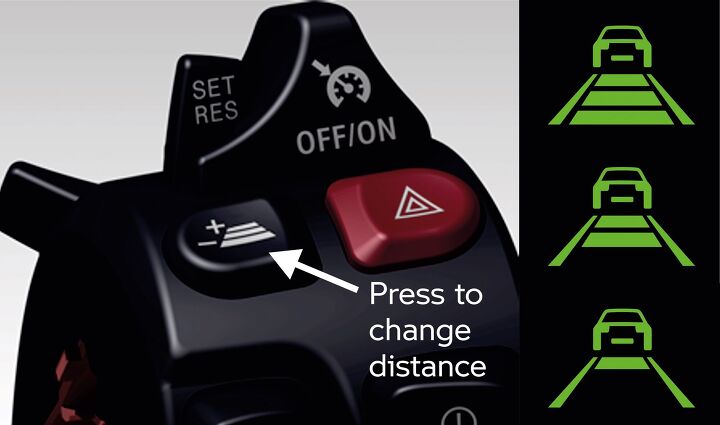
BMW’s active cruise control system controls are located on the left handlebar’s switchgear. The distance selector allows riders to set the preferred separation space ahead. The distance function can also be deactivated, turning system into a regular non-active cruise control system. With its active system, riders will be able to set both a cruising speed and a distance ahead of the motorcycle. As long as the area within that range ahead of the motorcycle is clear, the cruise control system will maintain the set speed. The Set/Res button selects the current riding speed for the cruise control. Pressing it forward again increases it by 1 mph (with a short press) or 5 mph (with a longer press). Holding the button down longer increases the set speed by 5 mph until it is released. Pressing the button to the rear reduces the speed. Pressing the distance button toggles between three settings: short, medium or long. As with regular cruise control systems, riders can override the speed by twisting the throttle. Cruise control can be turned off by braking or turning the throttle grip forward past its resting position. Applying the clutch interrupts the cruise control for 1.5 seconds. BMW’s system has two modes, comfortable and dynamic, affecting how aggressively the system accelerates or decelerates. If the radar sensors detect something ahead within that set distance, the cruise control system reduces the speed until it regains the set separation distance. The radar sensor ignores stationary objects and only reacts to moving objects. Riders will still need to be manually in control when, for example, stopping at a traffic light or during traffic jams. 
Unlike other electronic hardware such as six-axis EMUs or ABS modules, the radar sensor needs to be near the front of a motorcycle and not tucked away within the bodywork. The sensor takes into account the motorcycle’s speed and yaw rate, predicting a path of travel through the next 100 meters to determine whether another vehicle is encroaching in the set distance. A distance controller sends a target acceleration (either positive for acceleration or negative for deceleration) via a CAN bus connection to the ABS and cruise control system. The ABS calculates the amount of drive torque from the engine and braking torque (if required) to adjust the speed. Active Cruise Control also works when passing another vehicle. Using the turn indicator activates the system’s overtaking assistant function, preparing it to switch from the vehicle being passed to vehicles in the new lane. BMW says its Active Cruise Control works in corners, but limits the speed to maintain a limited lean angle for comfortable turning (BMW lists 20 degrees as an example). The system will also limit any abrupt braking or acceleration maneuvers. The radar sensor also serves as a form of collision warning, even if the Active Cruise Control is disabled. A first level warning alerts when a vehicle is detected ahead, signaling that rider intervention is required. A second level warning comes on when the system detects a more dangerous scenario, where the system expects it cannot maintain a safe distance and emergency braking is required. For safety reasons, Active Cruise Control cannot perform emergency braking by itself; riders still have to be ready for emergency measures. BMW hasn’t outlined when we will see the Active Cruise Control on a production motorcycle, but we’re likely looking at the 2021 model year, coinciding with Ducati and KTM’s adoption of the technology. BMW’s sample images show the system equipped to a K1600GT but we expect it will be available on a wide range of models. There may be some regulatory hurdles to deal with, so it’s unclear if BMW will offer the technology in all markets.         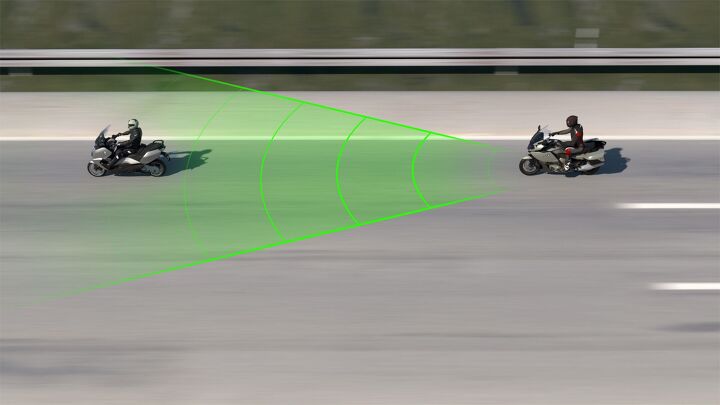           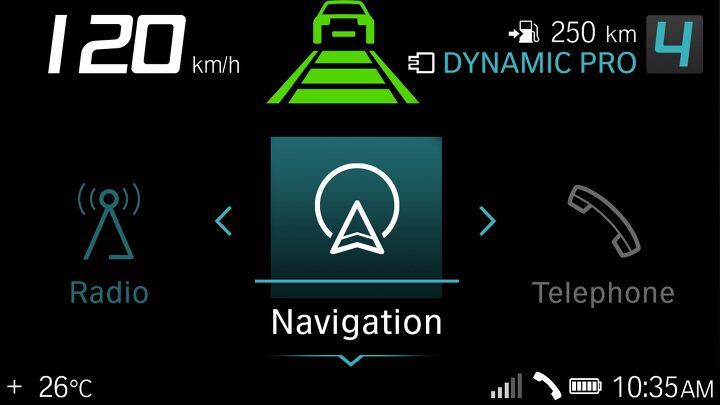
The post BMW Releases Details on Active Cruise Control System appeared first on Motorcycle.com. Motorcycles via Motorcycle.com https://ift.tt/2Std7JO June 30, 2020 at 03:20PM
F1 News - Ferrari forced to make a major redesign of their car
https://ift.tt/2YLw9Rn 
Ferrari have been forced to make a major redesign of their car as a result of flaws discovered since it ran in pre-season testing in February. Team boss Mattia Binotto said work on understanding why the car was off the pace led to a "significant change of direction in terms of development". The result is the car will run in pre-season specification at this weekend's delayed season-opening race in Austria. The upgrade is due to make its debut at the Hungarian Grand Prix on 17-19 July. Binotto said the team had been forced to revise their approach to the car's aerodynamics following their investigation into its performance shortfall. "We had to understand why we did not see the results we had expected on track and how much to recalibrate the whole programme as a result," Binotto said. "It would have been counterproductive to continue in the direction we had planned, knowing that we would not have reached our goals. "Therefore we decided to come up with a new programme that looked at the whole car, knowing that not all of it would be ready for the first race. "Our aim is to introduce the updates at the third race at the Hungaroring. "Apart from that, over and above the actual development of the car itself, these past few weeks we have worked a lot on analysing its behaviour, with simulation work and with the help of our drivers and I think that will prove its worth in Austria. "We know that, at the moment, we don't have the fastest package. We knew it before heading for Melbourne and that hasn't changed. "Having said that, the Spielberg circuit has different characteristics to Montmelo (in Spain, where testing was held) and the temperatures will be well above those of February. "In Austria, we must try and make the most of every opportunity and then in Hungary, with the new development step we are working on, we will be able to see where we are really compared to the others, while having to take into account the developments our competitors themselves will have brought along." The outcome is that Ferrari are unlikely to be in the fight for victory at the first two races at the Red Bull Ring this weekend and next. Not only were they already off the pace of Mercedes and Red Bull, but both their rivals have upgrades on their cars which will make them faster. Mercedes have delivered a significant aerodynamic upgrade to their car as Lewis Hamilton embarks on his bid to win a record-equalling seventh world title. And Red Bull have an improved Honda engine to add to their own aerodynamic progress. Ferrari driver Sebastian Vettel, who starts the season knowing it will be his last with the team, said: "We have to be realistic when it comes to the pecking order seen at the tests, but we are not downhearted." #F1 via BBC Sport - Formula 1 https://ift.tt/OHg7x6 June 30, 2020 at 02:21PM
Motorcycle News - Krugger adds street smarts to the Triumph Scrambler
https://ift.tt/31tzjLy
Most builders stick to just one of those camps, but Fred ‘Krugger’ Bertrand plays at both ends of the field. The Belgian maestro has won multiple AMD World Championships, but he’s just as happy to build ‘practical’ bikes—especially when the brief and budget both call for restraint.
The idea was to make the off-roady Scrambler a little more road-focused, shed some weight, and leave it with a polished factory-like feel.
They’re wrapped in Dunlop DT3-R tires—the street legal flat track items that come standard on the Indian FTR 1200. Krugger then tweaked the stance further by lowering the stock (and adjustable) suspension at both ends.
Krugger also trimmed the Scrambler’s subframe, and topped it with a new seat that’s actually a touch thicker than stock. Wild Hog in Italy handled the upholstery, even though they were operating under a nationwide stay-at-home order due to COVID-19. So Krugger asked them to include a small plaque with the Belgian and Italian flags, as a sign of solidarity.
The original right hand side cover needed filling in where the twin headers once ran, and the left side cover needed a cutout to make room for the new pipe. Krugger also hand-shaped a pair of aluminum ‘number boards’ to wrap around the mufflers, and a series of skinny heat shields to offer some protection.
The stock fender’s still in play up front, but it’s been mounted higher. And rather than retain the original plastic fork guards, Krugger formed a new set out of aluminum, integrating the new fender mounts in the process.
Moving to the cockpit, Krugger kept the stock LED headlight but modified the stock supports to shave off the turn signal mounts. Then he fabricated a small nacelle, to blend with the headlight and hide the stock display.
Keen eyes will also spot a pretty unique set of Beringer controls on both ends of the bars. Krugger replaced the entire brake system with Beringer components, and even installed a thumb brake for the rear, which neatly shares space on the bars with the hydraulic clutch control.
For the final livery, Krugger settled on black with a Rebellion logotype and gold detailing. But there’s more than just a paint job going on—parts like the swing arm were redone in black too, and there are custom decals on the rims.
And it’s irrefutable proof that Krugger always brings his A-game, no matter what the brief is. Krugger Motorcycles | Facebook | Instagram | Images by Thierry Dricot.
Motorcycles via Bike EXIF https://ift.tt/2Mf9b0c June 30, 2020 at 12:16PM
F1 News - Ferrari forced to make a major redesign of their car
https://ift.tt/3eZnaC9 
Ferrari have been forced to make a major redesign of their car as a result of flaws discovered since it ran in pre-season testing in February. Team boss Mattia Binotto said work on understanding why the car was off the pace led to a "significant change of direction in terms of development". The result is the car will run in pre-season specification at this weekend's delayed season-opening race in Austria. The upgrade is due to make its debut at the Hungarian Grand Prix on 17-19 July. Binotto said the team had been forced to revise their approach to the car's aerodynamics following their investigation into its performance shortfall. "We had to understand why we did not see the results we had expected on track and how much to recalibrate the whole programme as a result," Binotto said. "It would have been counterproductive to continue in the direction we had planned, knowing that we would not have reached our goals. "Therefore we decided to come up with a new programme that looked at the whole car, knowing that not all of it would be ready for the first race. "Our aim is to introduce the updates at the third race at the Hungaroring. "Apart from that, over and above the actual development of the car itself, these past few weeks we have worked a lot on analysing its behaviour, with simulation work and with the help of our drivers and I think that will prove its worth in Austria. "We know that, at the moment, we don't have the fastest package. We knew it before heading for Melbourne and that hasn't changed. "Having said that, the Spielberg circuit has different characteristics to Montmelo (in Spain, where testing was held) and the temperatures will be well above those of February. "In Austria, we must try and make the most of every opportunity and then in Hungary, with the new development step we are working on, we will be able to see where we are really compared to the others, while having to take into account the developments our competitors themselves will have brought along." The outcome is that Ferrari are unlikely to be in the fight for victory at the first two races at the Red Bull Ring this weekend and next. Not only were they already off the pace of Mercedes and Red Bull, but both their rivals have upgrades on their cars which will make them faster. Mercedes have delivered a significant aerodynamic upgrade to their car as Lewis Hamilton embarks on his bid to win a record-equalling seventh world title. And Red Bull have an improved Honda engine to add to their own aerodynamic progress. Ferrari driver Sebastian Vettel, who starts the season knowing it will be his last with the team, said: "We have to be realistic when it comes to the pecking order seen at the tests, but we are not downhearted." #F1 via BBC Sport - Formula 1 https://ift.tt/OHg7x6 June 30, 2020 at 10:39AM
F1 News - F1 drivers have discussed taking a knee at Austrian Grand Prix - Lando Norris
https://ift.tt/2YLFs43 
McLaren's Lando Norris says Formula 1 drivers have discussed 'taking a knee' at the season-opening Austrian Grand Prix this weekend. The gesture is a symbol of support for the Black Lives Matter movement and the struggle for racial equality. Britain's Norris, 20, said: "If we are going to do it, we should all do it as a grid. "We will do whatever we can to show we care and respect everyone. We will do what is right when the time comes." World champion Lewis Hamilton has increased his interventions on the subject of racial equality since the issue was brought to the fore by global protests following the death of African American George Floyd in May, after a police officer knelt on his neck for nearly nine minutes. Hamilton, F1's first black driver, has started his own commission to promote minority involvement in motorsport, and the sport's owners have launched their own diversity and quality drive. Hamilton's Mercedes team have changed the colour scheme of their cars from silver to black for this season as a symbol of their support for diversity and opposition to racism. Norris fellow Briton George Russell, who drives for Williams, said: "Lewis has been very strong in his thoughts and words and he is absolutely right to do so. "It has opened a lot of our eyes up to a greater issue in the world and if it's something that doesn't affect you personally, you don't necessarily know some of the issues. So it is something we have to support. "F1 needs to be more diverse. It is a very white-dominated sport. "Lewis has created a lot of awareness which is great and we will be standing there not only supporting him but also supporting the Black Lives Matter movement." Like Hamilton, Norris will carry the message 'End Racism' on his car this season, and he has recently encouraged followers on social media to sign petitions. Norris said: "I want to do better than any other driver, but everyone should be given the same opportunity and treated the same. "It is not fair that people get treated differently because of their race. "This sport reaches millions of people and the more we can do as drivers, teams and as a community in Formula 1, the bigger impact we can have." The season, which has been on ice since the Australian Grand Prix was cancelled in March as a result of the coronavirus crisis, starts with three races on consecutive weekends, two at Austria's Red Bull Ring on 3-5 and 10-12 July, followed by the Hungaroring on 17-19 July. All will be held behind closed doors and with a series of protocols in place to minimise the risks involving Covid-19. Norris said: "I will be in a bubble, speaking to and interacting with as few people as I need to. I have pretty much spent the last three months on my own so I am used to it. "We will have people on standby and people on back-up to jump into different roles if people fall ill. "But we all want to be here until the final race in December so we will take the precautions to make sure we can continue doing our job." #F1 via BBC Sport - Formula 1 https://ift.tt/OHg7x6 June 30, 2020 at 06:03AM
MotoGP News - Lorenzo rubbishes rumours of Ducati MotoGP return in 2021
https://ift.tt/2BTlB9Q Jorge Lorenzo has rubbished rumours linking him with a return to Ducati in 2021, but admits he feels he's still "capable" of winning the MotoGP title with the "right tools". Three-time premier class world champion Lorenzo retired from racing at the end of the 2019 campaign following a miserable debut season on the factory Honda, and has since returned to Yamaha as its official test rider in the winter. Lorenzo was due to make his race return as a wildcard at the Catalan Grand Prix with Yamaha, before coronavirus cancelled the original race and MotoGP subsequently banned wildcard outings for this year to cut down on paddock numbers. Linked briefly to a potential Petronas SRT move for 2021, Lorenzo has since been rumoured to be in the frame to rejoin Ducati - with whom he raced in 2017 and 2018, and won three races - amid slow talks between the Italian marque and Andrea Dovizioso. However, in an interview with motogp.com, Lorenzo moved to quell this speculation. "It's not true," Lorenzo said of the rumoured discussions. "It's true that I have a very good relationship with Gigi [Dall'Igna, Ducati general manager] from when we were together winning races in 125s with Derbi, we won two championships [in the 250cc class with Aprilia], we believe in each other a lot. "And we have a human relationship, so he called me on my birthday and we spoke a little bit about life, about the family.
"But nothing more, nothing professional. For the moment I'm very much enjoying the things I couldn't do when I was a professional racer, but I cannot tell you that I don't miss the winning feeling and the celebrations with the team." He added: "So that's why I said that if the opportunity, or the call to win the championship arrived, I will hear it and I will study it, because for me the thing that wakes me up and makes me motivated is winning. "I still believe at 33 years old I am capable - with the right tools - to still win the championship. "So, for the moment this call didn't arrive, so I cannot study this situation at the moment. "And for me there is only two possibilities to have the right tools to win - Yamaha, that has more or less already signed its four riders [for 2021] and Ducati. "There are no more chances." Dropped by Ducati for last year early in 2018, the Italian marque did try to get Lorenzo back into its fold at Pramac midway through 2019. But Lorenzo committed to seeing out his deal with Honda, with Jack Miller's future secured - the Australian stepping up to the factory team next season. Motogp Motorcycle Racing News via MotoGP news - Autosport https://ift.tt/2uOa9Ei June 30, 2020 at 05:44AM
F1 News - Formula 1: Can you name the famous circuits from just one clue?
https://ift.tt/2Zi8G9E The 2020 Formula 1 season is almost ready to start, so can you name these famous circuits from just one clue? Take the quiz to find out. #F1 via BBC Sport - Formula 1 https://ift.tt/OHg7x6 June 30, 2020 at 04:03AM
F1 News - Alex Zanardi: Ex-F1 driver has second operation after hand cycle accident
https://ift.tt/3dQ1eYM 
Alex Zanardi has had a second operation as a result of the severe head injuries he suffered in a hand cycle accident. The 53-year-old Italian, a former Formula 1 driver turned four-time Paralympic gold medallist, collided with a lorry during a race in Pienza, Italy, on 19 June. A hospital statement said the surgery was "necessary" after "an evolution of the patient's state". It added that his neurological condition remained "severe". Roberto Gusino, health director of the hospital in Sienna, said of the two-and-a-half-hour surgery: "The intervention carried out represents a step that had been hypothesised by the team. "Our professionals will evaluate the evolution of the situation day by day. In agreement with the family, the next bulletin will be released in about 24 hours." Zanardi remains in intensive care, where he is sedated and intubated. His cardio-respiratory and metabolic condition is "stable" and his prognosis is confidential. Zanardi has become a global sporting icon for the strength of will and determination he has shown in overcoming adversity in his career, after he lost both his legs in an accident while racing in a Champ Car event in Germany in 2001. Zanardi drove in F1 from 1991-94 and in 1999, for the Jordan, Minardi, Lotus and Williams teams, scoring a best result of sixth place. He raced in the US-based Champ Car series from 1996-98, winning the title in 1997 and 1998. He returned to Champ Cars in 2001, when he lost both his legs in an accident at Germany's Lausitzring. After extensive rehabilitation, he returned to motorsport in 2005, spending four years racing for BMW in the World Touring Car Championship, and winning four races. He then turned to hand-cycling, in which he has won 12 world championships in addition to his four Paralympic gold medals, as well as the New York City marathon in 2011. #F1 via BBC Sport - Formula 1 https://ift.tt/OHg7x6 June 29, 2020 at 01:15PM |
�
Categories
All
Archives
November 2020
|



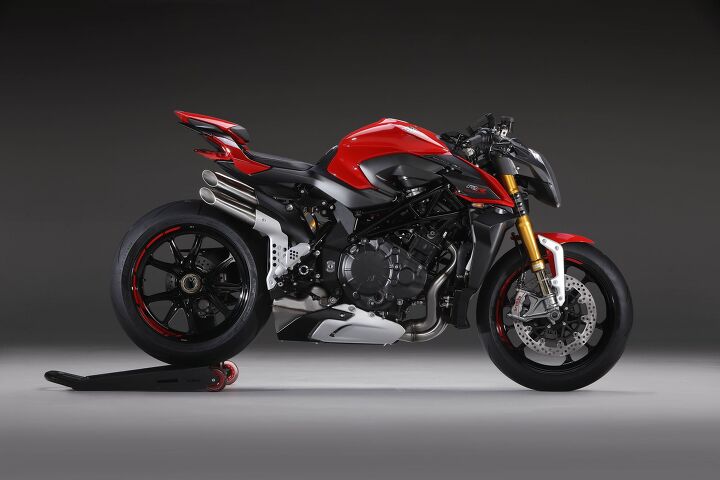





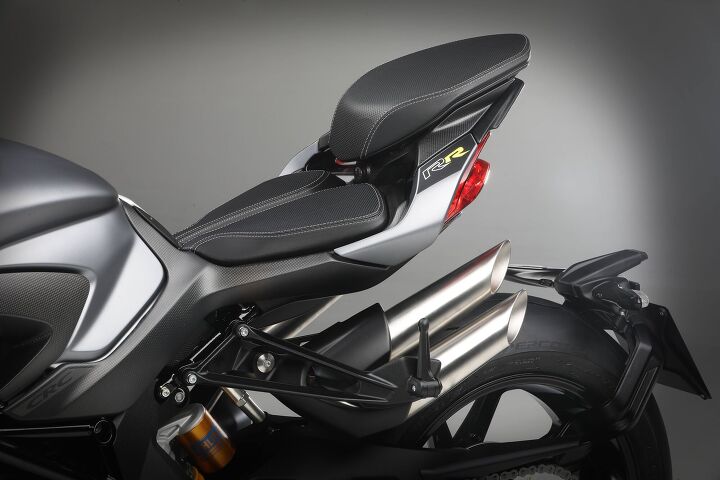



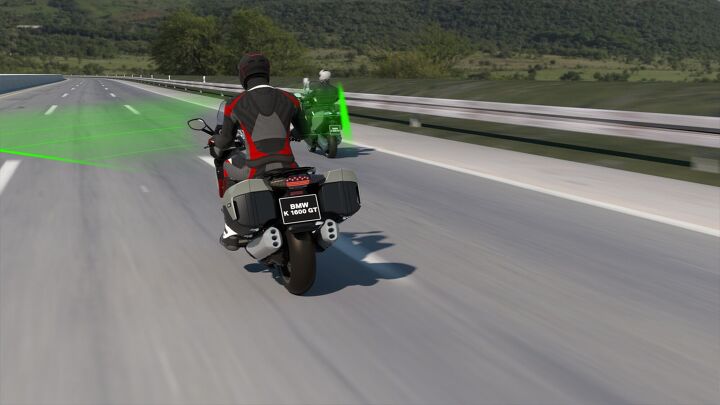

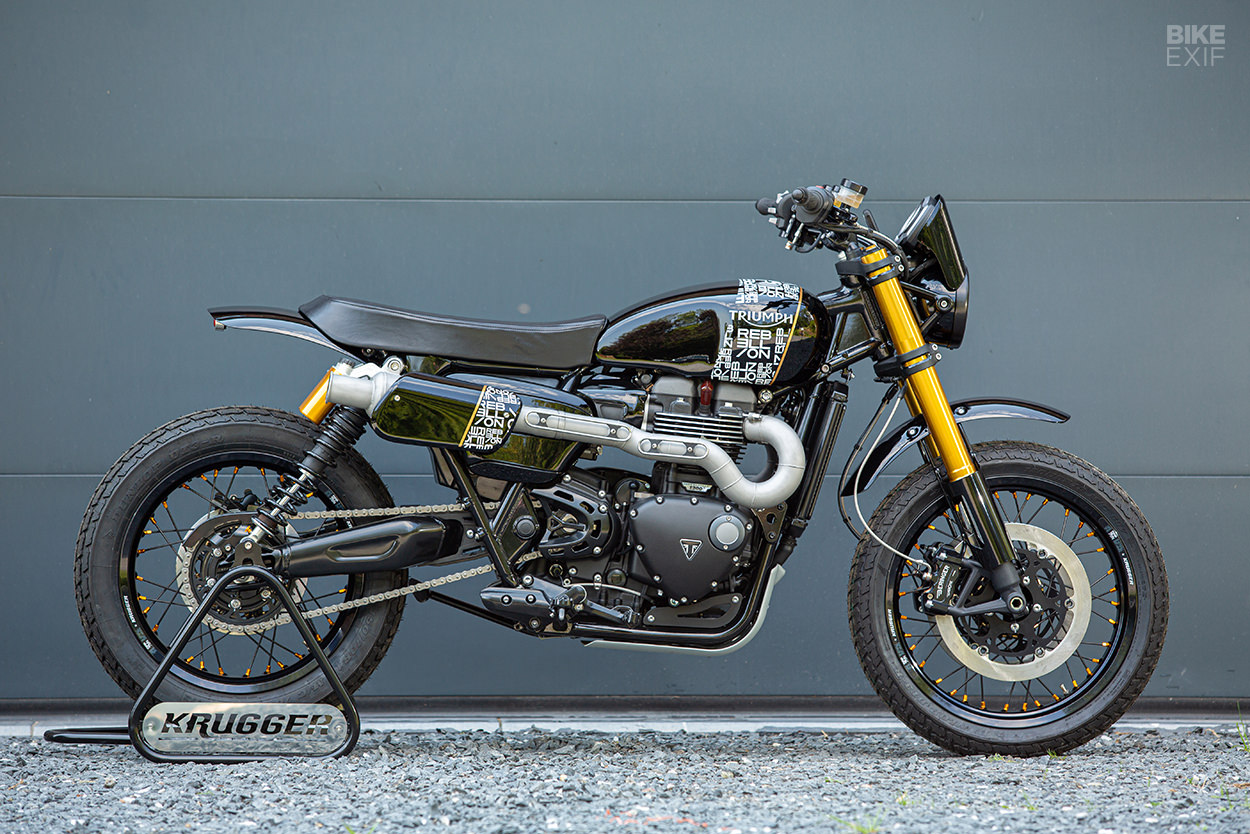




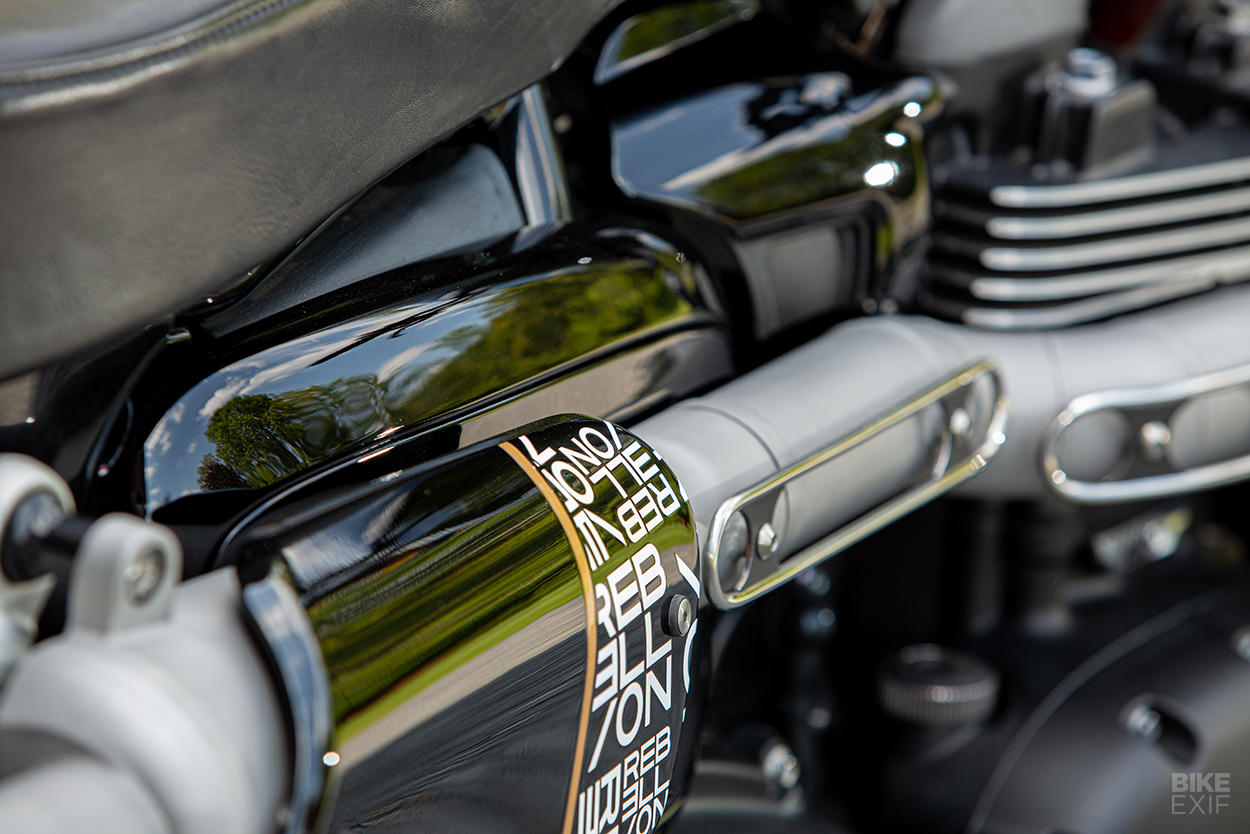






 RSS Feed
RSS Feed

6/30/2020
0 Comments